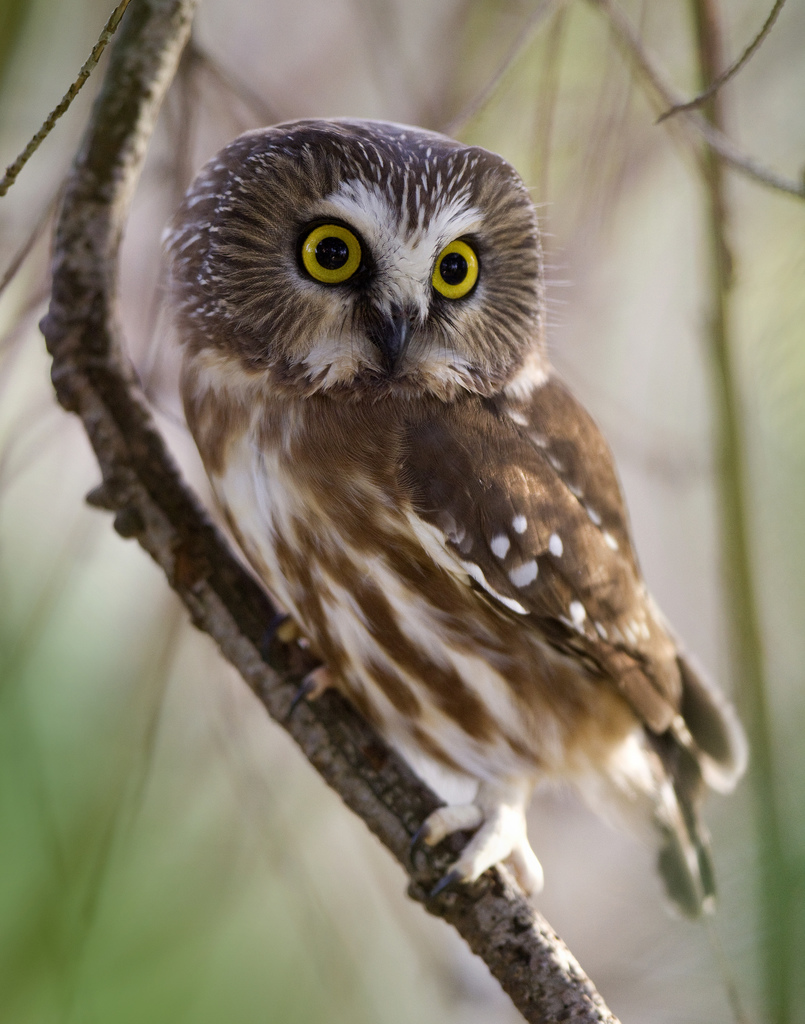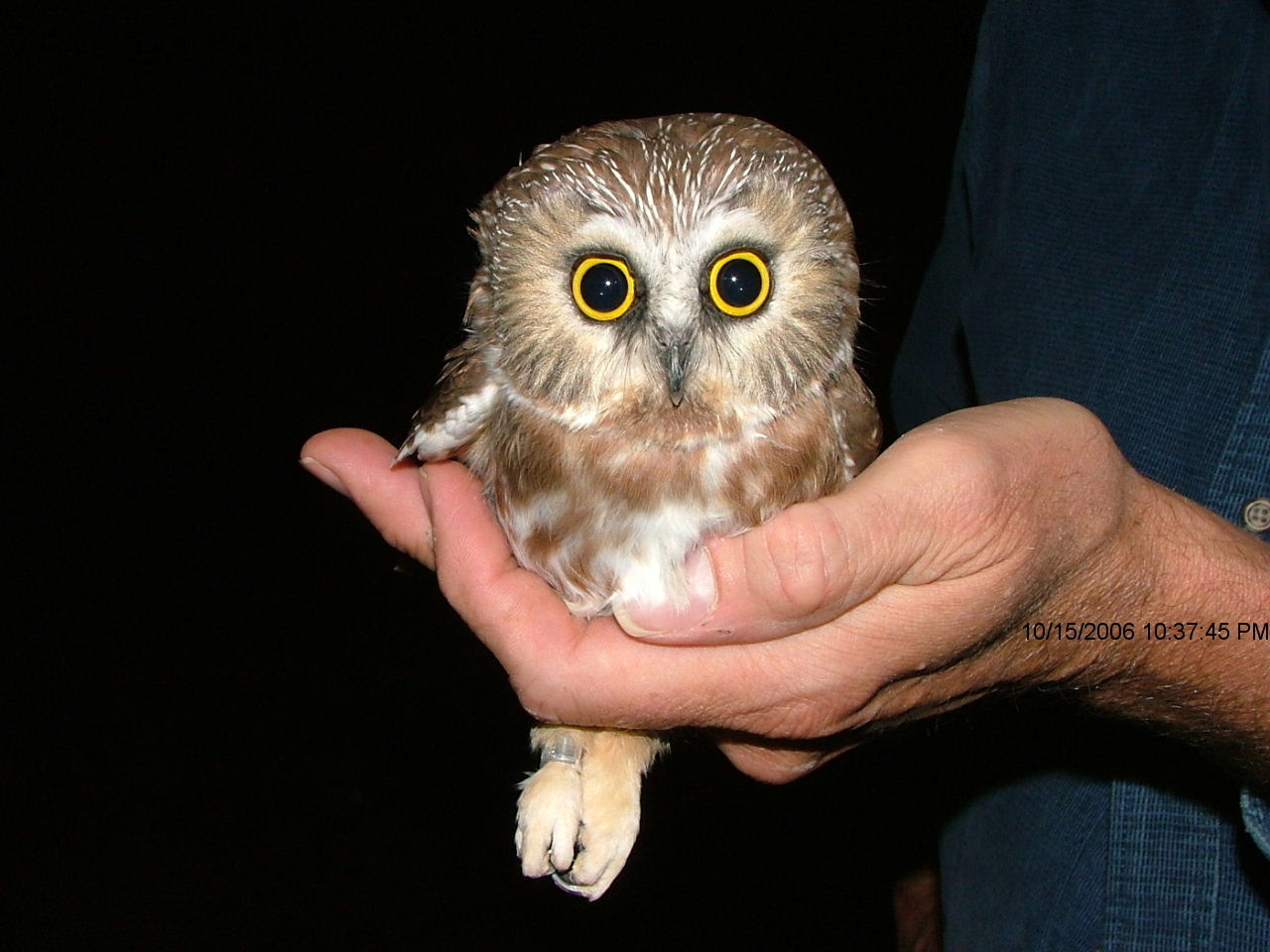
Aegolius acadicus
SUBFAMILY
Surniinae, Tribe Aegoliini
TAXONOMY
Strix acadica J.F. Gmelin, 1788, Nova Scotia. Two subspecies
are recognized.
OTHER COMMON NAMES
English: Saw-whet owl, Queen Charlotte owl; French: Petite
Nyctale; German: Sдgekauz; Spanish: Mochuelo Cabezуn.
PHYSICAL CHARACTERISTICS
7.1–8.7 in (18–22 cm). Female, 3.5 oz (100 g). Male, 2.6 oz (75
g). One of the smallest owls, it has a large, round head with a
buff to brownish facial disc, white eyebrows, and a white patch
between the yellow to golden eyes. Forehead and crown of
head are brown with white streaks. Upperparts are brown with
white or buff spots on the nape of the neck, shoulders, and
wing-coverts. Underparts are white tinged with buff and spotted
or streaked with reddish brown. The short legs are heavily
feathered to the talons.
DISTRIBUTION
Southern Alaska to southern United States through to eastern
Canada down to northern Florida. Also a strip through the
highlands of California and Mexico.
HABITAT
Forests; typically prefers coniferous forests.
BEHAVIOR
Nocturnal, but occasionally may forage during the day. Migrates
south to winter, although some birds are present in the
breeding range all year round. The call of the male during
mating season sounds like a saw being sharpened, giving the
species its common name.
FEEDING ECOLOGY AND DIET
Mainly small mammals, especially mice and voles, some small
birds, and insects. Hunts from a perch; locates prey using acute
hearing and low-light vision.
REPRODUCTIVE BIOLOGY
Nests in cavities, such as old woodpecker holes. Lays five to
seven eggs. Incubation is 27–29 days. There is some evidence
of polyandry in good vole years.
CONSERVATION STATUS
Not globally threatened. Populations are stable, but vulnerable
to reduction with loss of habitat.
SIGNIFICANCE TO HUMANS
None known.
Other popular Animals
Photo Gallery of - Northern saw-whet owl




 Animalia Life
Animalia Life